Wine Tours in Tuscany - About Angie - +39 3333185705 - angie.chianti@gmail.com
Table of Contents
Italy, long revered for its art, architecture, and cuisine, harbors a hidden treasure for wine lovers—and those treasure chests are the vineyards scattered across its diverse landscapes. From sun-drenched hills to mist‑laden valleys, this journey through Italy’s finest vineyards offers not just superb tasting, but a deeper connection to terroir, tradition, and centuries of craftsmanship. Whether you’re chasing the title of the best Italian winery or savoring a taste of regional character, this guide will carry you from Tuscan hilltops to alpine terraces and beyond.
Tuscany: The Heart and Rhythm of the Best Italian Winery Culture
Chianti – Where History Flows in Every Glass
Our journey begins in Chianti, Tuscany’s viticultural soul. Among its cypress-lined roads lie some of Italy’s most iconic wineries. Castello di Ama, located above Gaiole, harmonizes contemporary art with historic winemaking, offering guided tastings across its renowned crus like La Casuccia and Bellavista. Nearby, Castello di Brolio, owned by the Ricasoli family since the 12th century, not only commands panoramic views but claims the origin of the modern Chianti recipe.
Here, Chianti Classico is more than a wine—it’s a reflection of place and patience. Estate visits often include vertical tastings of their Riservas, strolls through organically farmed vineyards, and rustic meals of wood-fired breads and olive oil pressed on-site. Each stop tells a story—not just of wine, but of the people and landscape shaping it.
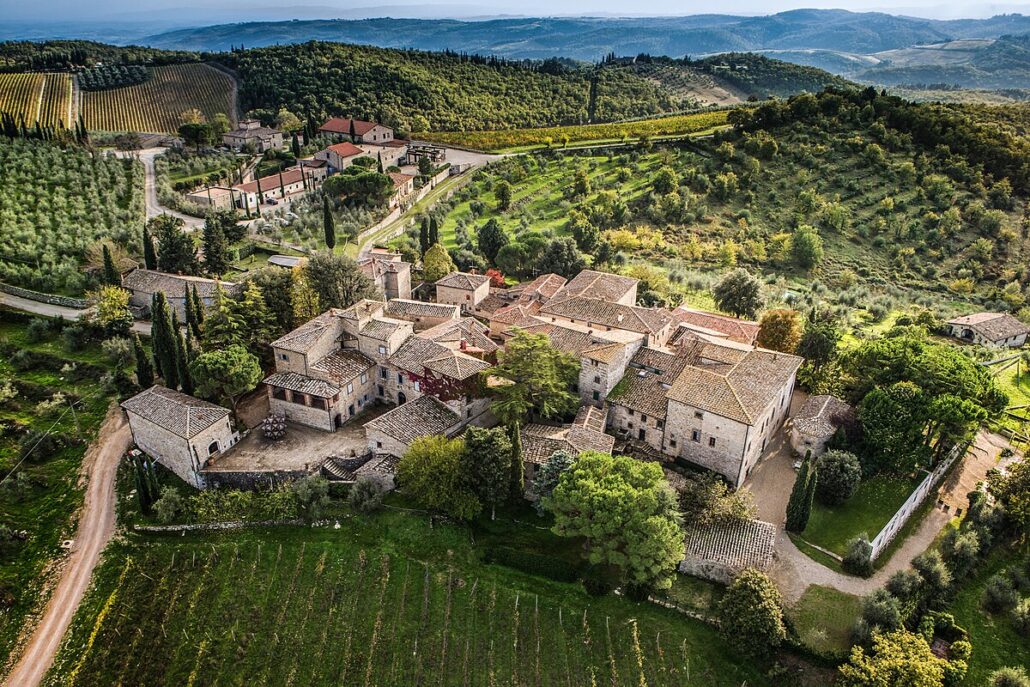
Montalcino – A Royal Legacy in the Best Italian Winery Collection
Heading south, Montalcino rises majestically from Tuscan hills, crowned by Brunello—Italy’s “king of reds.” Esteemed estates like Poggio di Sotto and Castello Banfi offer guided experiences that begin with Rosso di Montalcino before progressing to aged Brunellos, showcasing how years in oak and bottle cultivate layers of spice, earth, and elegance.
Expect to tour barrel rooms filled with Slavonian oak, taste vintages aged far beyond the legal minimum, and wander vineyards clinging to limestone-rich slopes. And always, a glass of Brunello is best appreciated with slices of pecorino cheese and views over the Val d’Orcia.

Florence – The Urban Core of the Best Italian Winery Journey
Florence, the Renaissance capital, surprises many with the proximity of exceptional wine estates. Visit the architectural wonder of Marchesi Antinori’s tasting center in Bargino—a sleek, spiraling building that blends innovation with six centuries of family winemaking. Taste their famed Tignanello or Solaia wines while overlooking the Chianti hills.
Also nearby, Villa Vignamaggio and Tenuta di Capezzana invite guests into Renaissance-era estates where you can walk vineyards, tour cellars, and blend your own bottle. Lunches here might pair Sangiovese with local olive oil and seasonal produce—turning a tasting into a celebration of Tuscan living.
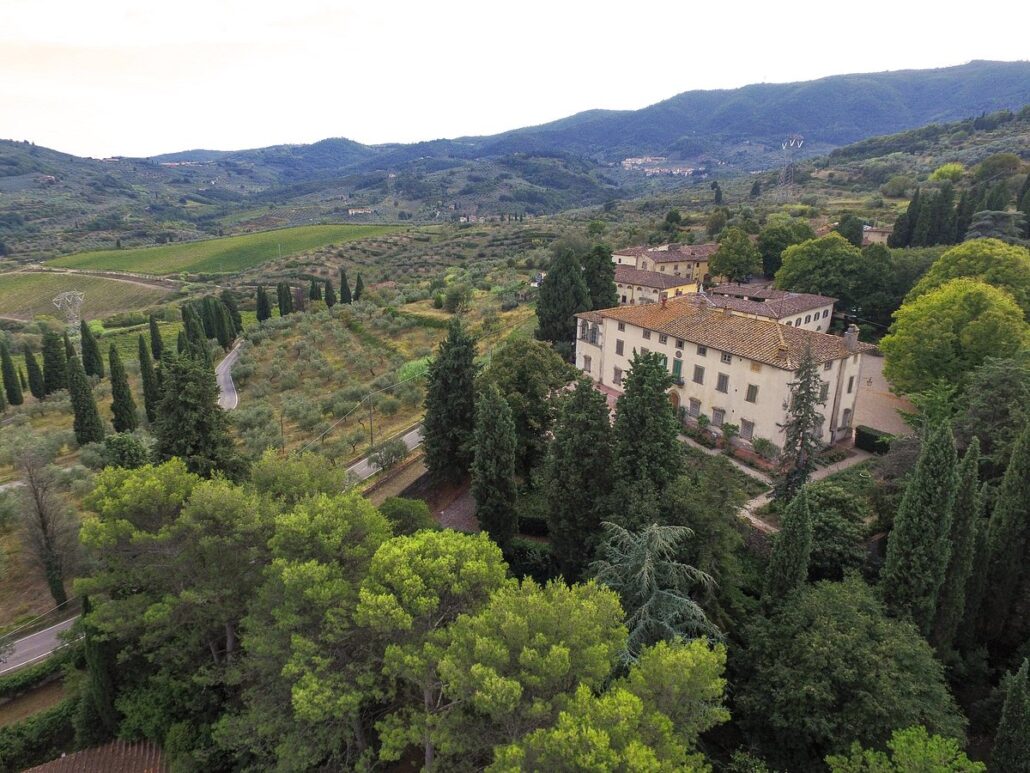
Beyond Tuscany: Charting the Landscape of the Best Italian Winery Across Italy
Italy’s wine scene stretches far beyond Tuscany. Each region brings its own textures, tastes, and terroir-driven expressions, all contributing to what may be considered the best Italian winery.
Veneto – Prosecco Hills, Amarone Depth & Glera Fizz
In Veneto, the wine story splits between vibrant sparkle and deep, contemplative reds. Around Valdobbiadene and Conegliano, Prosecco Superiore DOCG shines for its lightness and charm. Wineries like Villa Sandi and Nino Franco walk visitors through the Charmat method, offering vertical tastings of brut and extra dry expressions, often paired with seafood lunches under vine-covered pergolas.
But head west to Valpolicella, and the tone deepens. Here lies Amarone della Valpolicella, one of Italy’s boldest and most revered red wines. Made using the appassimento method—where grapes are dried for weeks before fermentation—Amarone is rich, velvety, and powerful, with notes of dried cherry, spice, and dark chocolate.
Esteemed producers like Tommasi, Masi, and Allegrini offer immersive experiences, from vineyard walks through hillside pergola-trained vines to barrel tastings in centuries-old cellars. Amarone’s complexity and age-worthiness make it a jewel in Veneto’s crown, and a must-stop for anyone seeking a best Italian winery that bridges innovation with tradition.
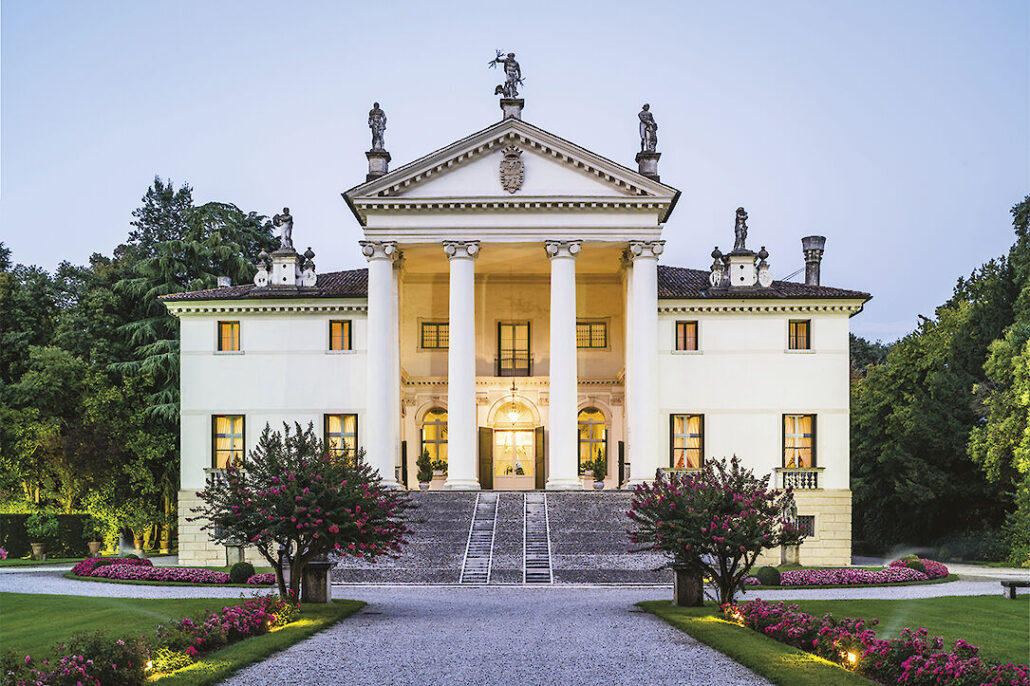
Piedmont – The Noble Nebbiolo in the Best Italian Winery Pantheon
Tucked into Italy’s northwestern corner, Piedmont is where fog, foothills, and finesse converge. This is the land of Nebbiolo, the grape behind Barolo and Barbaresco, often referred to as Italy’s most aristocratic reds. The region’s tranquil landscape hides a powerhouse of wine prestige, where ancient cellars and steep vineyards host many of the best Italian wineries.
In the Barolo zone, revered producers such as Vietti, G.D. Vajra, and Bartolo Mascarello craft expressive, long-lived wines. Visiting their estates means walking through hillside vineyards like Bricco delle Viole or Rocche di Castiglione, then descending into cool, stone cellars lined with massive oak barrels. Tastings often include side-by-side comparisons of single-vineyard crus, illuminating how soil and elevation create nuanced differences in aroma and structure.
Just northeast, Barbaresco offers a more graceful, early-drinking interpretation of Nebbiolo. Estates like Produttori del Barbaresco deliver high quality across multiple crus, while pioneers like Gaja push stylistic boundaries with world-renowned bottlings. A typical tasting in Barbaresco might pair wines with delicate local cheeses or truffle risotto, deepening the sensory experience.
Piedmont also surprises with variety—Barbera, Dolcetto, and Arneis provide balance and approachability. Many wineries offer vertical tastings or curated tours that blend wine, food, and cultural history, set against the backdrop of the Langhe’s rolling hills and medieval villages.
For those in search of elegance, tradition, and understated power, Piedmont offers a quiet yet undeniable claim to the best Italian winery experience.
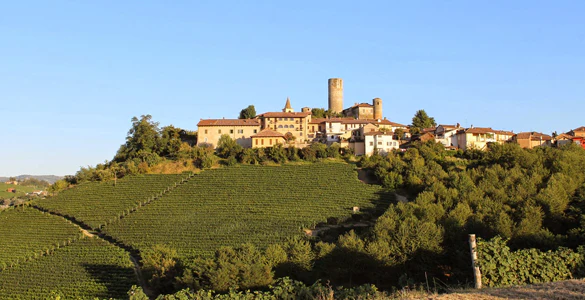
Lombardia – Sparkling Sophistication in the Best Italian Winery Circle
Traveling north, Lombardia unveils a world of elegant bubbles and mountain reds—equally eligible for the best Italian winery label. Central is Franciacorta, Italy’s metodo classico capital. This region between Lake Iseo and Brescia produces refined sparkling wines from Chardonnay, Pinot Noir, and Pinot Bianco.
- Ca’ del Bosco, known for its art-filled estate and gravity-flow cellar, crafts some of Italy’s most refined sparkling wines, including the prestigious Annamaria Clementi.
- Bellavista perfects traditional riddling and focuses on harmony and finesse, especially in their vintage expressions.
- Guido Berlucchi, where Italy’s first Franciacorta was born, mixes legacy with modern luxury under the historic Palazzo Lana.
- Barone Pizzini, a pioneer in organic viticulture, offers biodynamic vineyard tours and deep-dive tastings into sustainable wine practices.
Further north in Valtellina, steeply terraced vineyards yield Chiavennasca (Nebbiolo) wines shaped by altitude and Alpine air. Wineries like Nino Negri and Ar.Pe.Pe. produce reds with wild herb aromatics, fresh acidity, and remarkable age-worthiness.
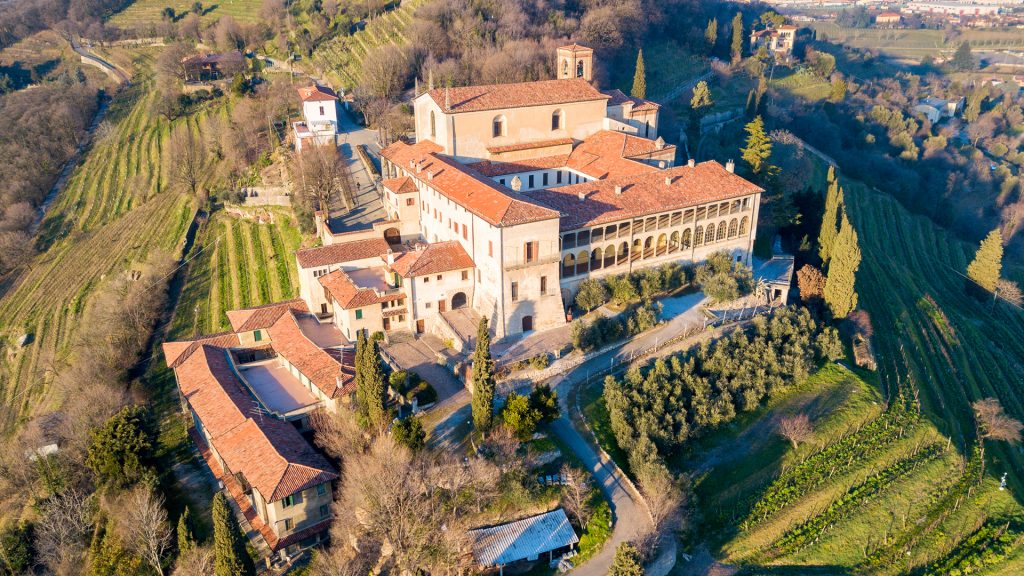
Sicily, Puglia, Friuli & Beyond – A Mosaic of Best Italian Wineries
From the volcanic slopes of Etna to Puglia’s sun-drenched plains and Friuli’s Alpine-adjacent valleys, southern and northeastern Italy reveal a wild spectrum of terroir.
- In Sicily, wineries like Benanti and Planeta craft wines from lava-rock soils—particularly Nerello Mascalese and Carricante—that buzz with minerality.
- In Puglia, estates such as Tormaresca combine Primitivo’s warmth with modern finesse
- In Friuli Venezia Giulia, wineries like Jermann and Venica & Venica highlight fresh, aromatic whites from grapes like Friulano and Ribolla Gialla.
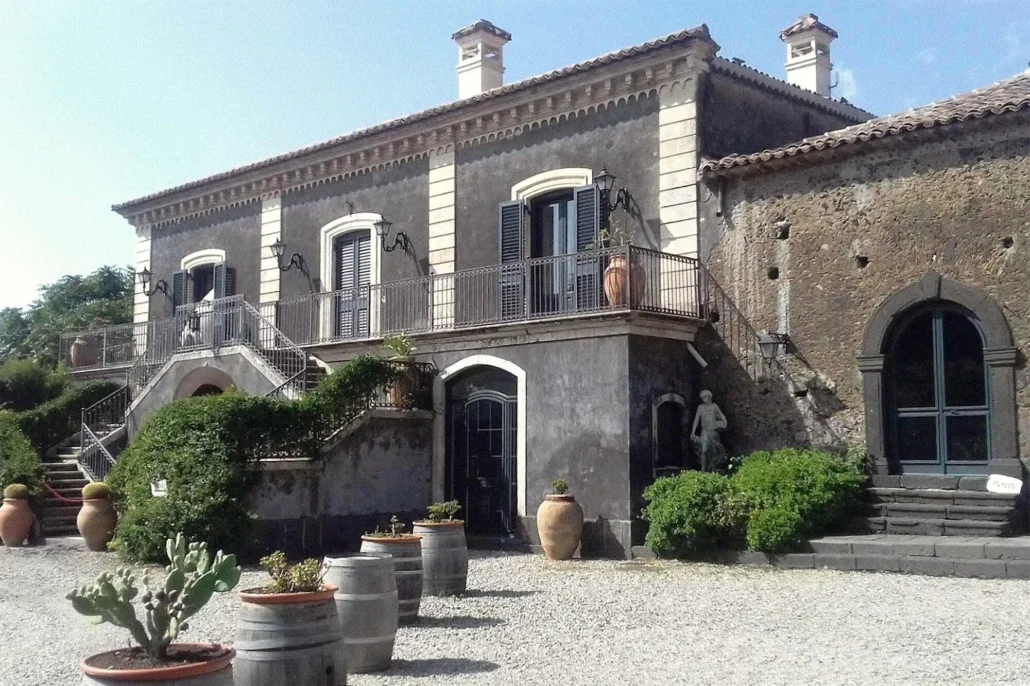
What Defines the Best Italian Winery Experience?
Whether nestled in Chianti hills or perched on Alpine cliffs, the best Italian wineries share key hallmarks:
- Storytelling: Centuries of lineage, resilience, and evolution pour into each vintage.
- Sense of Place (Terroir): Every glass reflects unique soil, altitude, and climate.
- Tradition & Innovation: Historic techniques meet organic farming and architectural modernity.
- Wine Quality & Depth: Structure, balance, and longevity matter more than volume.
- Hospitality: From family-run farms to grand estates, the welcome is always warm.
Planning Your Best Italian Winery Itinerary
- Start in Florence: Acclimate with tastings at Antinori, Capezzana, or Vignamaggio.
- Explore Chianti: Visit Castello di Ama, Brolio, or boutique gems like Poggio del Moro.
- Continue to Montalcino: Sample Brunello at Poggio di Sotto, Banfi, or Ciacci Piccolomini.
- Head North to Franciacorta: Tour Ca’ del Bosco, Bellavista, Berlucchi, or Barone Pizzini.
- Branch to Veneto or Piedmont: For bubbles and Nebbiolo epics.
- Optional Detours: Include Sicily’s Etna, Puglia’s Salento, or Friuli’s Collio.
Tip: Book in advance for guided tours, blending classes, and food pairings—especially at smaller estates.
An Invitation: Why Chase the Best Italian Winery Label?
To seek the best Italian winery is to explore beyond the bottle. It’s about standing where vines outlive generations, where architecture mirrors artistry, and where each glass links you to the land. These wineries don’t just offer tastings—they offer transformations.
Conclusion
Italy’s wine map is a rich mosaic of styles, soils, and stories. Whether in a centuries-old Chianti estate, a sleek Franciacorta cellar, or a volcanic vineyard in Sicily, each best Italian winery you visit adds a new layer to your understanding—and love—of Italian wine.
Your journey may start with a simple search, but it ends in lifelong memories, layered aromas, and the joy of clinking glasses with people who still believe in magic—vintage after vintage. Salute!





